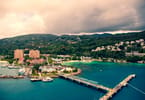The focus of the United Nations health agency’s efforts in easing the impact of influenza A(H1N1) has shifted to identifying age groups most at risk from contracting the virus, a World Health Organization (WHO) spokesperson said earlier this week.
The majority of people who have contracted the new flu strain, now topping 120,000 laboratory confirmed cases, are children between the ages of 12 and 17 years old, WHO spokesperson, Aphaluck Bhatiasevi, told reporters at a news conference in Geneva.
Ms. Bhatiasevi said that as the pandemic spreads, other age groups are becoming increasingly affected, and the top WHO priority is to determine which age groups face the highest threat so it can take measures to protect them.
Ms. Bhatiasevi noted that a special regional meeting of health ministers from 22 countries of the WHO Eastern-Mediterranean region last week recommended that people from high-risk population groups, including pregnant women and those with underlying health conditions, should reconsider traveling to the upcoming annual Hajj pilgrimage to Mecca in November.
She added that WHO was also consulting governments and experts on other kinds of mass gatherings, such as concerts and the 2010 World Cup soccer tournament in South Africa.
Although the agency last month raised the alert level for A(H1N1) to Phase 6, the highest on its pandemic alert scale, it stressed that the level refers to the spread of the virus and not its severity, with the majority of cases showing only mild symptoms.
The upgrade to Phase 6 means that sustained human-to-human transmission of the virus has spread beyond North America, where it was initially concentrated.
WHAT TO TAKE AWAY FROM THIS ARTICLE:
- Although the agency last month raised the alert level for A(H1N1) to Phase 6, the highest on its pandemic alert scale, it stressed that the level refers to the spread of the virus and not its severity, with the majority of cases showing only mild symptoms.
- Bhatiasevi said that as the pandemic spreads, other age groups are becoming increasingly affected, and the top WHO priority is to determine which age groups face the highest threat so it can take measures to protect them.
- Bhatiasevi noted that a special regional meeting of health ministers from 22 countries of the WHO Eastern-Mediterranean region last week recommended that people from high-risk population groups, including pregnant women and those with underlying health conditions, should reconsider traveling to the upcoming annual Hajj pilgrimage to Mecca in November.






















